In 1434, King Ponhea Yat moved the capital from Bassac City (in ancient Kampong Cham Province) to Phnom Daun Penh. The sanctuary built by Lady Penh had been removed, but the King decided to construct a new one. Then he tried to build up the hill and constructed a brick stupa on top. After the inauguration, the King named the hill “Preah Chedei Paravata”, but nowadays it is simply called Wat Phnom. The first establishment did not last long, the capital moved from one place to Phnom Daun Penh again and remains up to the present time. Phnom Penh covers an area of 290 kilometer square with 2 million inhabitants. It is a major industrial, commercial, communication, and tourism center for home and world services. Valuable tropical products can be found here including seafood, fresh water food, delicious fruit, handicrafts and articles. The city offers tourists a lot of modern hotels and restaurants with diversified service. It houses of Khmer art, especially sculptures, from different periods of Cambodian history, 19th century dance costumes, royal barges and palanquins. On display inside are more than 5,000 works of art. Wat Phnom is a famous city landmark. This symbol of the Phnom Penh Capital was built in 1434 to house the sacred relics. Today Wat Phnom remains the highest artificial hill in Phnom Penh and centre of many forms of leisure activities. It commemorates the end of Cambodia's rule by France in 1953. The Naga motif can be seen in historic, culture and modern business contexts, as a symbol of the country. It's also used to commemorate to the soul of fallen combatants who laid down their lives for freedom of the country. SURROUNDING PHNOM PENH![]() PHNOM PENH CITY
PHNOM PENH CITY Phnom Penh was founded by a rich old lady named Penh, who house was not far from the river bank, on a knoll on the eastern side of small hill. One day when the water had overflowed she went down to the river bank and found a large Koki tree drifting down the river. She immediately called her neighbors to get into a boat to catch that tree. After taking it to the bank, she cleaned out the mud and discovered four bronze Buddha statues and one stone Buddha in the hollow tree. Lady Penh and her neighbors exulted in their discovery. They brought all the statues to Lady Penh’s house. Then she asked the people to build a small cottage for them in front of her house and to build up a hill “Phnom” nearby.
Phnom Penh was founded by a rich old lady named Penh, who house was not far from the river bank, on a knoll on the eastern side of small hill. One day when the water had overflowed she went down to the river bank and found a large Koki tree drifting down the river. She immediately called her neighbors to get into a boat to catch that tree. After taking it to the bank, she cleaned out the mud and discovered four bronze Buddha statues and one stone Buddha in the hollow tree. Lady Penh and her neighbors exulted in their discovery. They brought all the statues to Lady Penh’s house. Then she asked the people to build a small cottage for them in front of her house and to build up a hill “Phnom” nearby.
After that, she had the Koki sawn up for wood to make a sanctuary. In 1372, as a result of the firm support and assistance of her neighbors, Lady Penh built up a sanctuary on the “Phnom” and covered it with grass called “Sbov Phlaing”. The sanctuary housed the four bronze statues, whereas the stone statue, she put at the foot of the “Phnom” to the east. When the work was finished, the monks were invited to settle at the foot of the “Phnom” to the west. Then, they called it “What Phnom Daun Penh” (old lady Penh’s Pagoda).![]() ROYAL PALACE
ROYAL PALACE Built in 1866 by King Norodom, the Royal Palace is now home to His Majesty Preah Bat Samdech Preah Norodom Sihanouk is the King of Cambodia, and Her Majesty Preah Reach Akka Mohesey Norodom Monineath Sihanouk is the Queen. The Palace is actually a number of structures within a pagoda-style compound. An awe-inspiring sight the throne room (the main building), has a tiered roof topped by a 59 meter tower.
Built in 1866 by King Norodom, the Royal Palace is now home to His Majesty Preah Bat Samdech Preah Norodom Sihanouk is the King of Cambodia, and Her Majesty Preah Reach Akka Mohesey Norodom Monineath Sihanouk is the Queen. The Palace is actually a number of structures within a pagoda-style compound. An awe-inspiring sight the throne room (the main building), has a tiered roof topped by a 59 meter tower.
![]() SILVER PAGODA
SILVER PAGODA
Located within the Royal Palace compound, the Silver Pagoda is so named because of its floor which is made up of 5,000 silver tiles. The treasures are a solid gold Buddha encrusted with 9,584 diamonds and weighing 90 kilo and a small 17th century emerald and baccarat crystal Buddha.![]() MARKET
MARKET A shopping spree starts at the local markets. Phnom Penh has many markets. The huge yellow domed Central Market (Phsar Thmey) is the place to pick up gold and silver jewellery. Tuol Tom Pong Market and Olympic Market offer antique collectors of genuine articles. Shopping bargains can be found in intricate stone and wood carvings, Cambodia hand woven-silk, and their silversmith expertise dates from the 11th century. Visitors should remember to be relaxed when bargaining, and to enjoy themselves. If they are not frustrated when they are not understood very well they will come away with a cheap and interesting souvenir.
A shopping spree starts at the local markets. Phnom Penh has many markets. The huge yellow domed Central Market (Phsar Thmey) is the place to pick up gold and silver jewellery. Tuol Tom Pong Market and Olympic Market offer antique collectors of genuine articles. Shopping bargains can be found in intricate stone and wood carvings, Cambodia hand woven-silk, and their silversmith expertise dates from the 11th century. Visitors should remember to be relaxed when bargaining, and to enjoy themselves. If they are not frustrated when they are not understood very well they will come away with a cheap and interesting souvenir.
![]() TA PROHM TONLE BATI
TA PROHM TONLE BATI
This 13th century temple, build by King Jayavarman VII, was dedicated to Brahmanism and Buddhism. It is located in Bati district, Takeo Province, 35 Km south of Phnom Penh. It can be reached via National road No2.![]() NEANG KHMAU
NEANG KHMAU Built of bricks and sand-stones in the 6th century, located in Takeo province 58 km south of Phnom Penh. This temple can reach by road No.2. Phnom Chiso or Surya Parvata The mountain temple was built of late rite brick and sandstone in the 11th century. The mountain is about 100 meters high with stone-made two stairs. One can reach the top by the western stair with 206 steps only 30 minutes, whereas the northern one with 434 steps lasts one hour. The temple can be reach by national road No.2
Built of bricks and sand-stones in the 6th century, located in Takeo province 58 km south of Phnom Penh. This temple can reach by road No.2. Phnom Chiso or Surya Parvata The mountain temple was built of late rite brick and sandstone in the 11th century. The mountain is about 100 meters high with stone-made two stairs. One can reach the top by the western stair with 206 steps only 30 minutes, whereas the northern one with 434 steps lasts one hour. The temple can be reach by national road No.2
![]() ANGKOR BOREI
ANGKOR BOREI
It is a town in the area of several ruins and archaeological digs. The area contains artifacts dating from Funan (4th & 5th century) and Water Chenla (8th century) as well as later Angkorian period. The prasat ruins on top of nearby Phnom Da are 11th century. There is a small museum in the town.![]() PHNOM OUDONG
PHNOM OUDONG It is situated in Ponhea Leu district, Kandal province and 45 km north of Phnom Penh. One can reach it by road No 5. Phnom Oudong is also called Phnom Preah Reach Trap, Phnom Atharreus and Phnom Preah Chetareus. It is a mountain which is rich in cultural patrimonies. It used to be a former Khmer’s capital city in 1618 - 1866.
It is situated in Ponhea Leu district, Kandal province and 45 km north of Phnom Penh. One can reach it by road No 5. Phnom Oudong is also called Phnom Preah Reach Trap, Phnom Atharreus and Phnom Preah Chetareus. It is a mountain which is rich in cultural patrimonies. It used to be a former Khmer’s capital city in 1618 - 1866.![]() KOH DACH
KOH DACH The island is located 30 Km along the Mekong River. On Koh Dach once can visit a silk weaving village and watch the woven silk on old looms. The island is also famous for its handcraft production, pottery osier craftwork, woodcarving, painting and jewelry cutting. Koh Dach can be reached via Road No 6A and by boat. It is a scenic route along the Mekong River, with its many fishing villages.
The island is located 30 Km along the Mekong River. On Koh Dach once can visit a silk weaving village and watch the woven silk on old looms. The island is also famous for its handcraft production, pottery osier craftwork, woodcarving, painting and jewelry cutting. Koh Dach can be reached via Road No 6A and by boat. It is a scenic route along the Mekong River, with its many fishing villages.
Phnom Penh and Surrounding
Monday, January 24, 2011Posted by specialshowtoday at 8:28 AM
Labels: The Phnom Penh City
Subscribe to:
Post Comments (Atom)
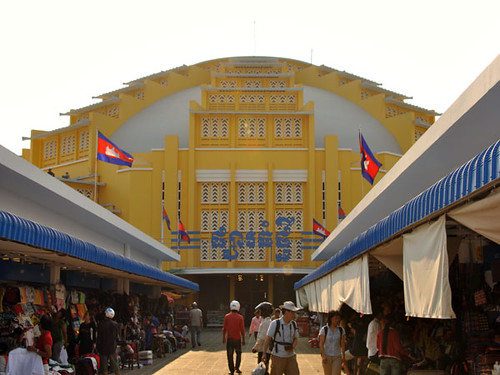




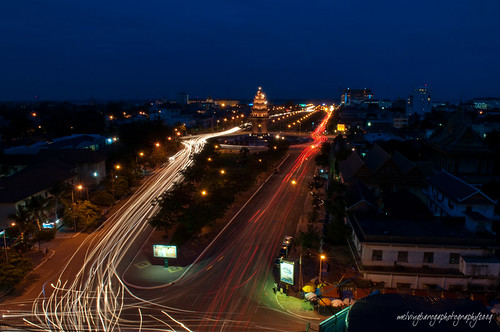


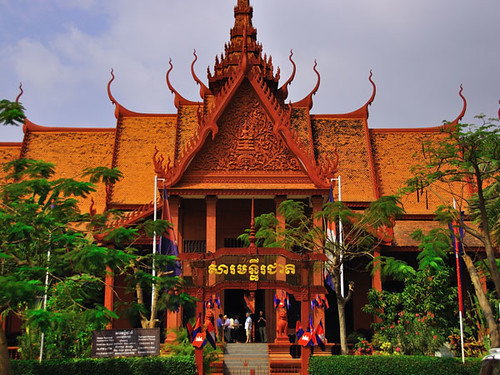

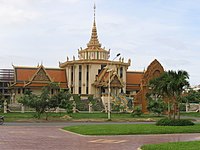
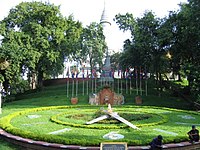


0 comments:
Post a Comment